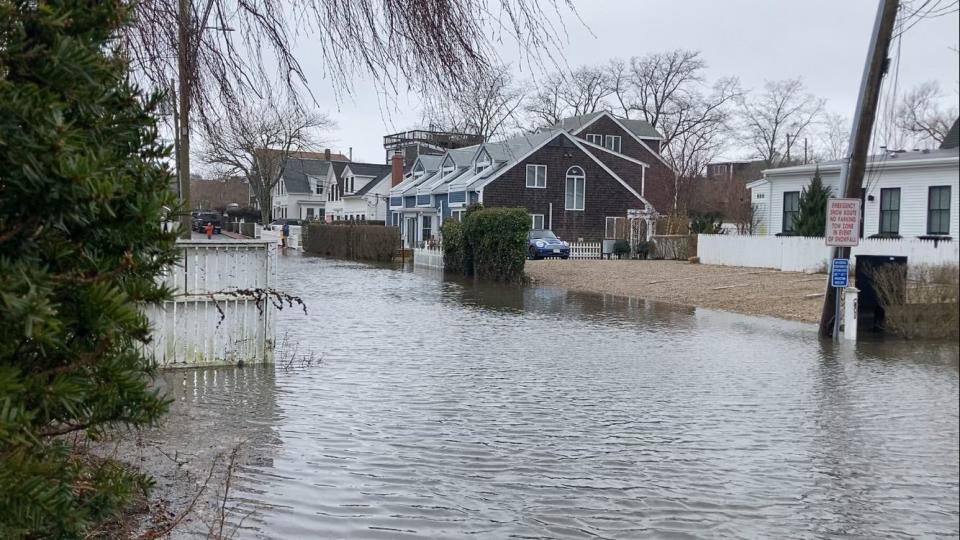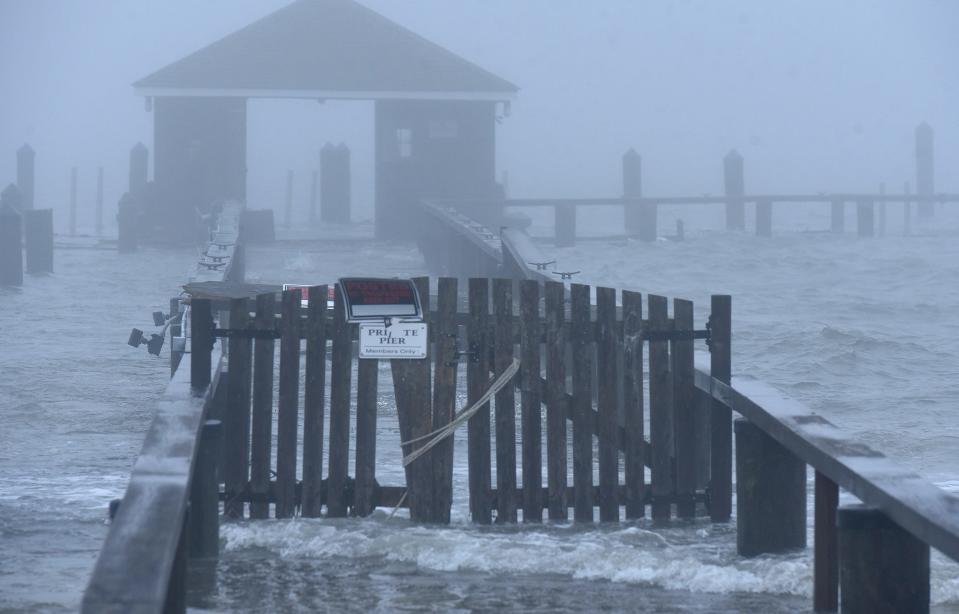Gallon of water per person, and other things to know when making a storm prep kit
An emergency preparedness kit is "more than batteries and bottled water," says William "Chip" Reilly III, Barnstable County's emergency preparedness director.
"You may need to survive on your own for three days or more," said Reilly.
Hurricanes, flooding, winter weather, hot weather, and radiation are all hazards that Cape and Islands residents could face throughout the year, Reilly said.
Which is why the time to prepare for an emergency "is now," he said.
"The perfect time for me is on a slow, Sunday afternoon," said Reilly. "Don't pack an hour before a storm hits. Sit down, use your checklist and take your time."
Here are some tips to get ready for the next storm.

Make a list of who will use your emergency kit, and add these basics
The first step for an emergency preparedness kit is making a list based on the needs of a household. Each kit should include a gallon of water per person, extra blankets, non-perishable food and flashlights with extra batteries, Reilly said.
Kits can also include needs for a pet.
"Lists are a guide and starting point to make emergency preparedness less scary, especially before an event," said Reilly, who has about 35 years of experience as an emergency manager.

Essentials for children, and entertainment not powered by electricity
If a family includes children, guardians should pack essentials like correctly-sized diapers, formula, wipes and snacks, but also games and books to keep children entertained if the power goes out.
"A deck of cards can go a long way in an emergency," said Reilly.
Phone chargers are also important, said Reilly.
Medications, medical equipment and mobility devices
Medications should be a top priority. Not only the medications themselves, but a list of all medicines, including doses.
Medical equipment must also be considered, such as oxygen machines, mobility devices or speech and vision disability machines.
One kit for the car and one kit for the home
Each family should have several different kits - one for the car and one for the home. Reilly keeps his kits for the home in his garage.
"Keep a blanket and a pillow, a shovel, snacks, water and maybe a small Ziplock bag of pet food in your car," he said. "Yes, we all depend on things like AAA, but what if you break down, and assistance doesn't come for an hour or two? Be prepared for any kind of situation."

Know where the local shelters are. Here are the ones on Cape Cod.
Preparedness managers always encourage people to stay with friends and relatives during big storms and massive power outages, but there are also seven shelters within Barnstable County that can help keep residents safe, Reilly said.
Area shelters are located at Barnstable Intermediate School, Dennis-Yarmouth Regional High School, Nantucket High School, Sandwich High School, Falmouth High School and Nauset Regional High School.
Facilities will provide a cot to sleep on, food and water, basic first aid and functional assistance, according to the Barnstable County emergency preparedness website.
The stay at a shelter is not a vacation, or a hotel or a pharmacy, said Reilly. It's up to residents to bring essentials including extra clothing, medications and medical equipment.
Learn more about preparing for an emergency on Cape Cod
Reilly speaks at libraries across the Cape, teaching residents how to stay safe in any kind of situation.
He will appear at 10:30 a.m., Feb. 3 at the Eastham Library; at 6 p.m., Feb. 6 at Truro Public Library; at 6 p.m., Feb. 12 at the South Dennis Free Public Library; at 2 p.m., Feb 13 at Eldredge Public Library in Chatham; and 1:30 p.m., Feb. 16 at the Yarmouth Port Library.
"With residents more prepared, that translates to more people not being dependent on shelters if there is a large impact event," he said. "It takes pressure off community members and first responders."
What to put in a basic emergency kit
BASIC EMERGENCY PREPAREDNESS KIT |
Water - one gallon of water per person for at least three days for drinking and sanitation |
Food - at least a three-day supply of non-perishable food |
Battery-powered or hand crank radio and a NOAA weather radio with tone alert and extra batteries for both |
Flashlight and extra batteries |
First aid kit |
A whistle to signal for help |
Dust mask, to help filter contaminated air and plastic sheeting and duct tape to shelter-in-place |
Moist towelettes, garbage bags and plastic ties for personal sanitation |
Wrench or pliers to turn off utilities |
Can opener for food (if kit contains canned food) |
Local maps |
Cell phone with chargers, inverter or solar charger |
ADDITIONAL ITEMS TO CONSIDER |
Prescription medications and glasses |
Infant formula and diapers |
Pet food and extra water for your pet |
Cash or traveler's checks and change |
Emergency reference material such as a first aid book |
Sleeping bag or warm blanket for each person - consider additional bedding if you live in a cold-weather climate |
Complete change of clothing including shoes |
Household chlorine bleach and medicine dropper - when diluted nine parts water to one part bleach, bleach can be used as a disinfectant. Or in an emergency, you can use it to treat water by using 16 drops of regular household liquid bleach per gallon of water. Do not use scented, color safe or bleaches with added cleaners |
Fire extinguisher |
Matches in a waterproof container |
Feminine supplies and personal hygiene items |
Mess kits, paper cups, plates and plastic utensils, paper towels |
Paper and pencil |
Books, games, puzzles or other activities |
*lists according to Ready.gov |
Rachael Devaney writes about community and culture. Reach her at rdevaney@capecodonline.com. Follow her on Twitter: @RachaelDevaney.
Thanks to our subscribers, who help make this coverage possible. If you are not a subscriber, please consider supporting quality local journalism with a Cape Cod Times subscription. Here are our subscription plans.
This article originally appeared on Cape Cod Times: How to make an emergency preparedness kit, according a Cape Cod expert

